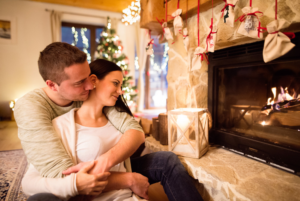The fireplace is the heart of a cozy home. It provides warmth, comfort, and a gathering place for family and friends.
Nestled atop every chimney is an often overlooked component — the chimney cap. This component plays a crucial role in maintaining the safety and efficiency of your fireplace.
While its name might conjure images of a simple protective covering, a chimney cap is far more than meets the eye. In this article, we will delve into the world of chimney caps.
We will unravel their purpose and functions. We will tell you why you might want to consider installing one on your chimney.
Read on!
What is a Chimney Cap
A chimney cap, also known as a chimney top or chimney cover, is a protective covering or device that is installed on the top of a chimney. It serves as a barrier between the interior of the chimney and the outside environment. Chimney caps are made of metal, such as stainless steel or copper. But other materials can also be used as long as they are weather resistant.
Benefits of Chimney Caps
The primary function of a chimney cap is to prevent debris, animals, and precipitation from entering the chimney. It acts as a barrier against rain, snow, leaves, twigs, and other debris that can clog the flue or obstruct the chimney’s airflow. By keeping these unwanted materials out, a chimney cap helps to maintain the optimal performance and safety of the chimney system.
Beyond debris prevention, chimney caps also serve other important purposes. They act as spark arrestors, preventing sparks or embers from escaping the chimney and causing roof fires or igniting nearby flammable materials.
Furthermore, chimney caps can contribute to improved ventilation and draft efficiency. They help create a controlled airflow by reducing downdrafts, minimizing the entry of strong winds, and facilitating proper chimney drafts. This promotes better combustion, prevents the backflow of smoke into the home, and enhances the overall efficiency of the fireplace or heating appliance connected to the chimney.
Chimney Cap Installation
The installation process involves positioning the cap over the chimney opening, aligning it, and securing it in place using screws or other fastening mechanisms. If needed, additional steps may include attaching brackets or clamps to ensure stability and applying a sealant to create a watertight seal.
Whenever working at heights or on a roof, safety should be a top priority. Make sure that you’ve done roof repair requirements if necessary. Ensure you have a stable and secure working platform, such as a sturdy ladder. You must also take necessary precautions to avoid accidents or falls. If you’re unsure about safety procedures, it’s best to consult a professional.
Get a Chimney Cap Today
Chimney caps are an essential component of any chimney system. They help protect against animals and debris. They also prevent rainwater from entering your chimney. Don’t risk potential damage to your chimney systems and roofs. Get a chimney cap today!
Did you find this article helpful? Keep reading our blog for more!




Be First to Comment